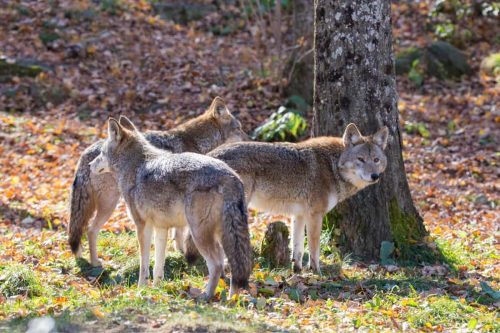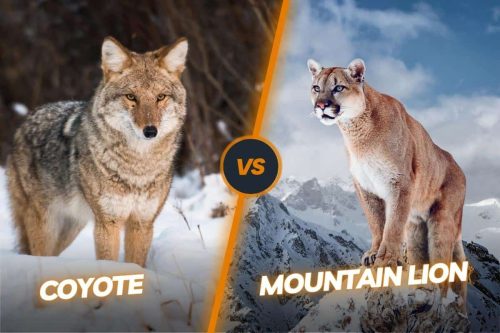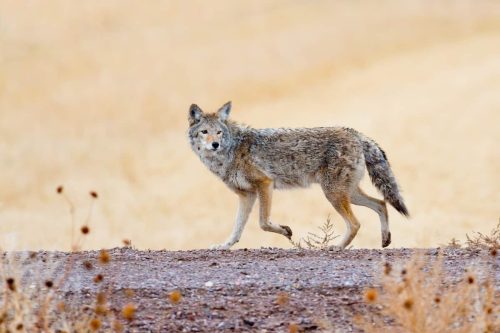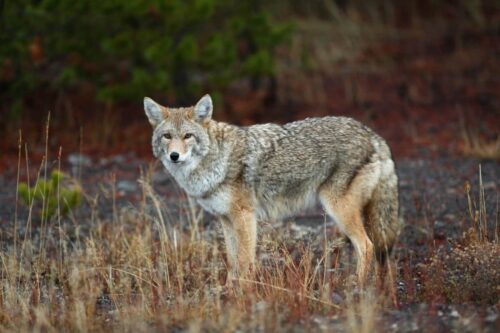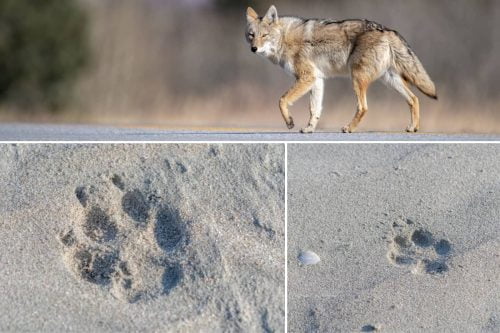Animals Like Coyotes – 20 Similar Animals Listed
Coyotes are one of North America’s most recognizable wild animals, but they are not the only species with a coyote-like appearance. In this blog post, we will explore 20 animals like coyotes. These animals worldwide are often mistaken for coyotes due to their similar features and markings.
From wolves to jackals and wild dogs, these animals can be hard to tell apart and often have fascinating characteristics of their own. Read on to learn more about these unique species of animals that look like coyotes.
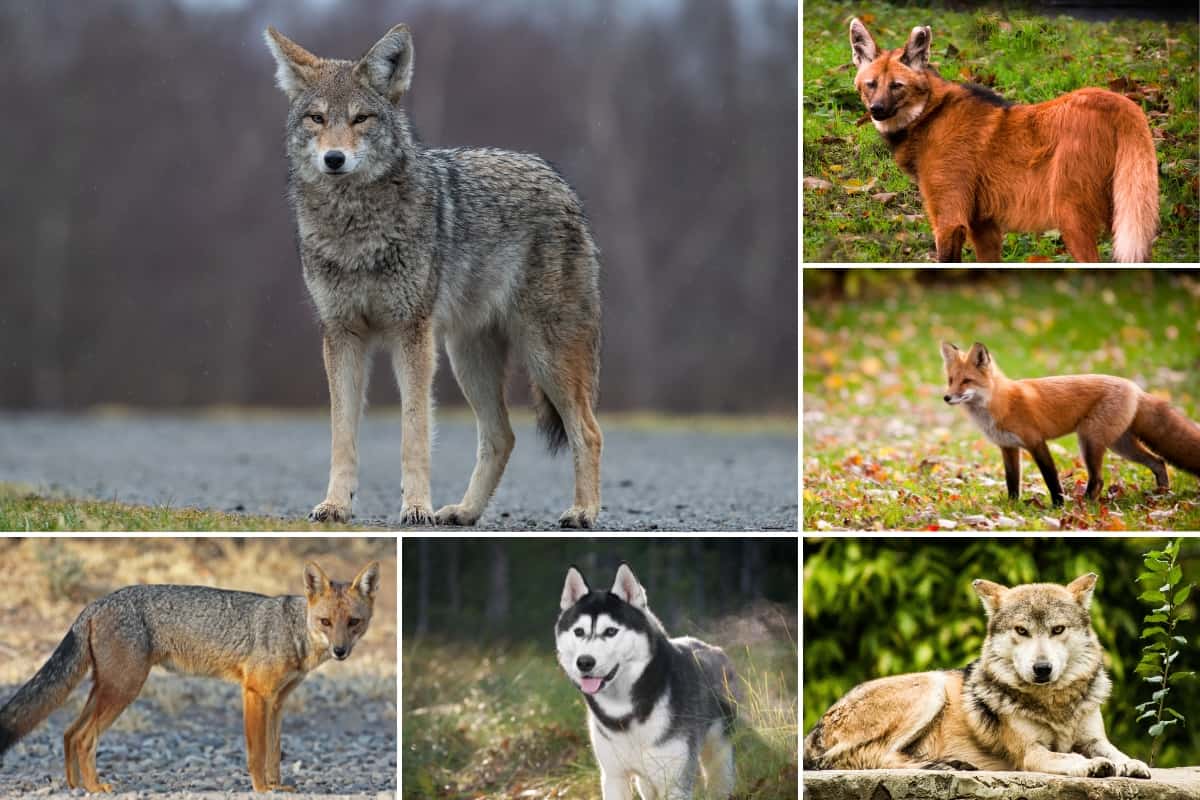
Contents
- Why Confused by Animals Like Coyotes
- 1) The Coywolf
- 2) The Red Fox
- 3) The Red Wolf
- 4) The Maned Wolf
- 5) The Gray Wolf
- 6) The Darwin’s Fox
- 7) The African Wild Dog
- 8) The Crab-Eating Fox
- 9) The Side-Striped Jackal
- 10) The Ethiopian Wolf
- 11) The Australian Dingo
- 12) The Raccoon Dogs
- 13) The New Guinea Singing Dog
- 14) The Fennec Fox
- 15) The Arctic Fox
- 16) The Alaskan Malamute
- 17) The Siberian Husky
- 18) The Culpeo
- 19) The Alaskan Husky
- 20) The Pampas Fox
- Final Verdict
- FAQs
Why Confused by Animals Like Coyotes
Are you having trouble telling coyotes apart from similar animals? If so, you’re not alone. Many struggle to differentiate between coyotes and other members of the Canidae family. It’s easy to get confused about animals like coyotes, especially when they share similarities with other species.
Many of these animals are canids or dog family members with similar physical traits and behaviors. Additionally, their range and habitats often overlap, leading to further confusion. Understanding the differences between these animals is essential for conservation efforts and your safety.
By learning about these similar species, you can identify and differentiate between them with greater ease, ultimately increasing your knowledge and appreciation for the diversity of the natural world. So what are we waiting for, let us dive into our list of animals similar to coyotes.
1) The Coywolf
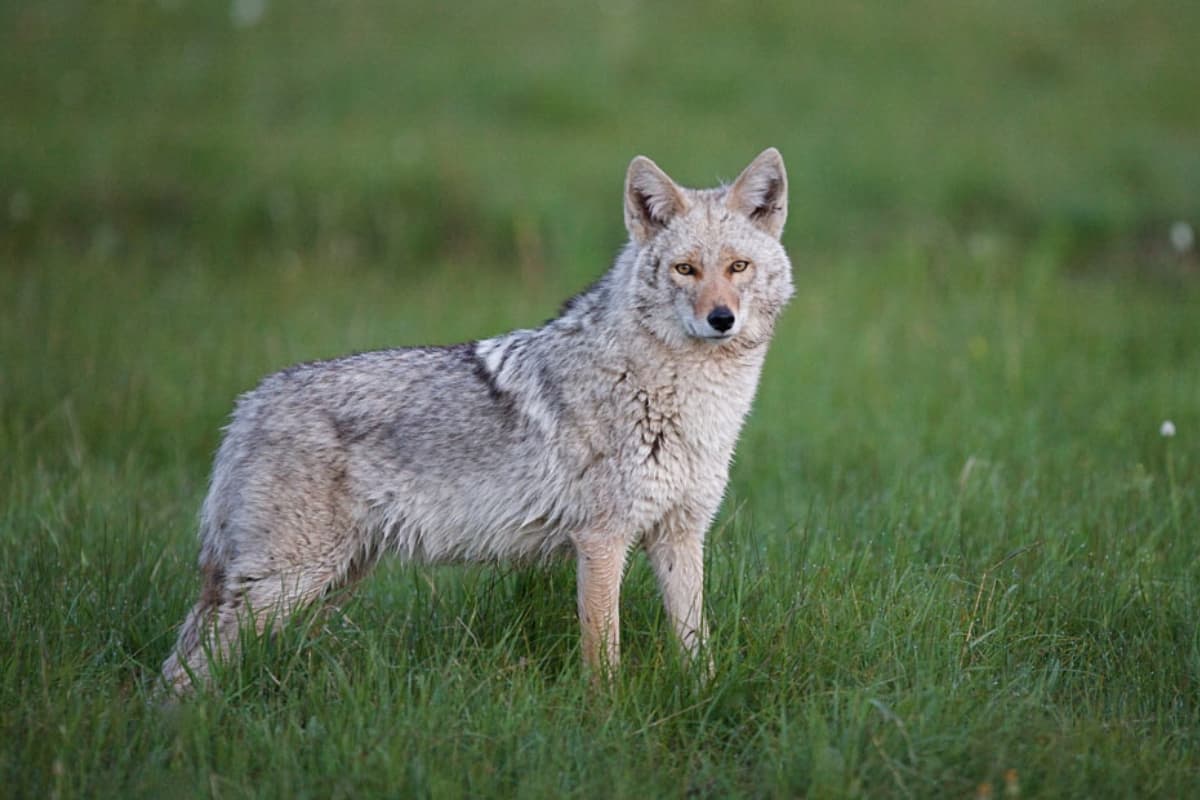
The Coywolf, also known as the Eastern Coyote, is a hybrid between a coyote and a wolf. They can be found in eastern Canada and the northeastern United States. They typically weigh between 30-50 pounds and have a mix of physical characteristics from coyotes and wolves.
Their coat can range from grey to brown to reddish, and they have large ears and a bushy tail. The Coywolf is known for its adaptability and has thrived in urban and suburban areas. However, they have also been known to prey on pets, so it’s essential to be aware of their presence in your area.
2) The Red Fox
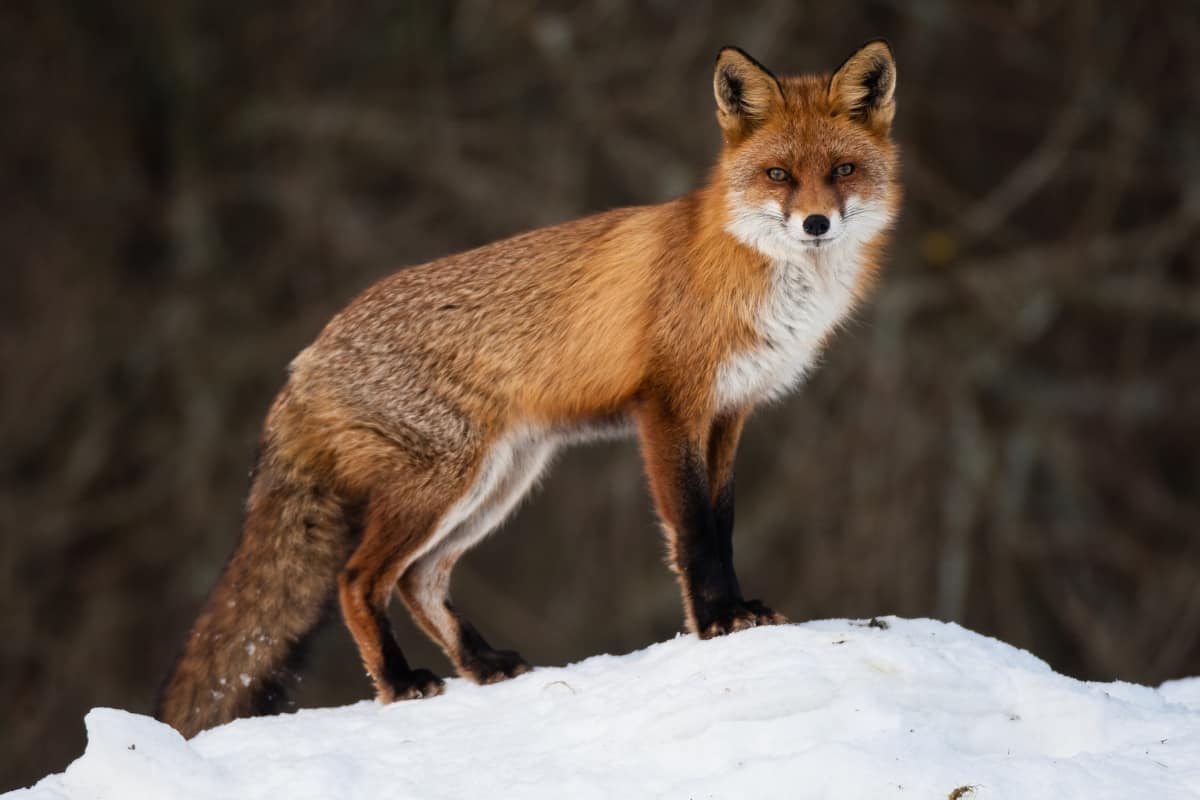
The Red Fox, also known as Vulpes vulpes, is another animal often confused with the coyote due to its similar size and color. However, the Red Fox has a slenderer body, a pointed snout, and a distinctive bushy tail with a white tip.
Read our article to find out how big are coyotes.
These nocturnal predators have a broad diet and can be found across most of North America, Europe, and Asia. Red Foxes are not considered a threat to humans and often live near residential areas, making them a familiar sight in many communities. While they may resemble coyotes, their distinct features and behavior separate them from these wild canids.
3) The Red Wolf
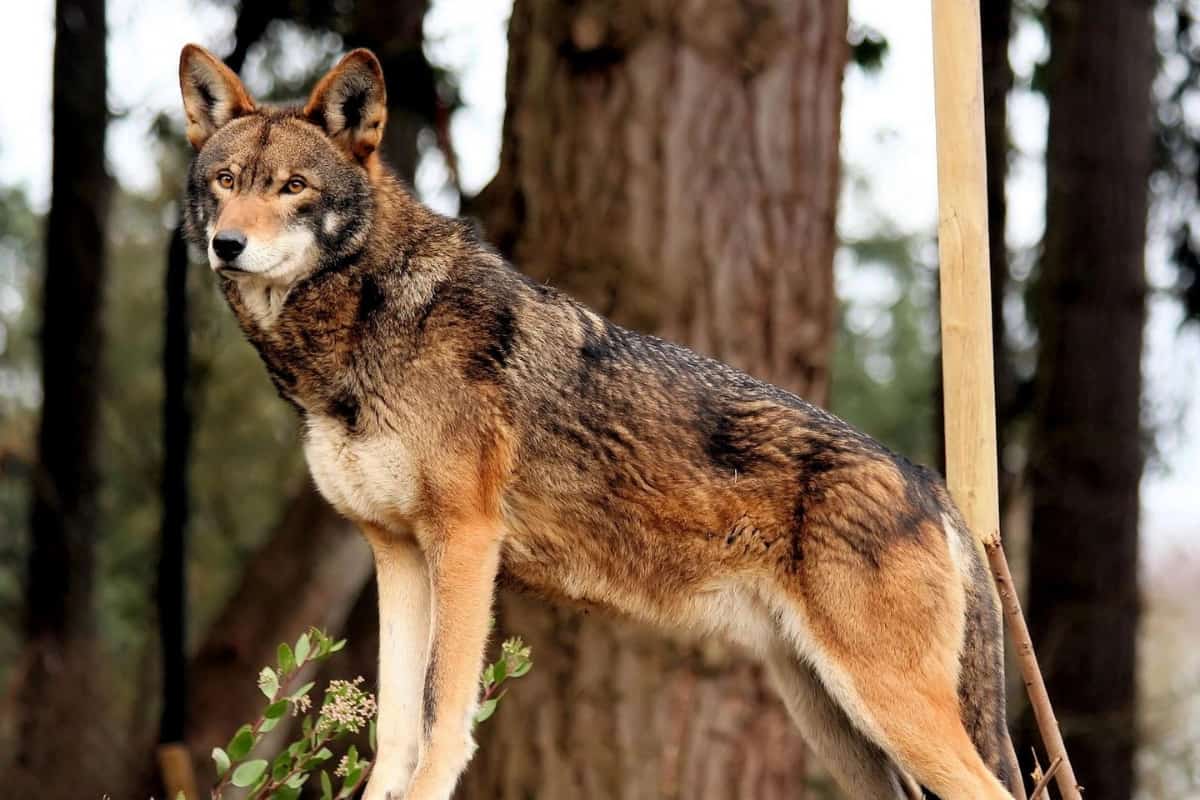
Another animal often confused with the coyote is the red wolf. While they share some physical similarities, such as reddish-brown fur and a bushy tail, the red wolf is a distinct wolf species native to southeastern North America. Unfortunately, they have been driven to near extinction due to habitat loss, hunting, and interbreeding with coyotes.
The last remaining red wolves have been reintroduced into the wild in limited numbers and are now protected under the Endangered Species Act. If you spot a red wolf in the wild, consider yourself lucky, but give them plenty of space and admire them from a safe distance.
4) The Maned Wolf

The maned wolf, also known as the “red fox on stilts,” is a large canid species native to South America. They are often confused with coyotes due to their reddish-brown fur and long legs. However, their size, distinct black mane, and unique vocalizations set them apart from coyotes.
Unlike other canids, they are solitary animals and primarily hunt small mammals, birds, and reptiles. Maned wolves are also known for their diet of fruits, which makes up about 50% of their diet. Unfortunately, due to habitat loss and hunting, the maned wolf is listed as a near-threatened species.
5) The Gray Wolf

The gray wolf, or the timber wolf, is a highly social and intelligent animal in North America, Europe, and Asia. They have a distinctive howl that can be heard for miles and play a vital role in their ecosystem. They are also often compared to coyotes due to their similar size and appearance.
However, there are critical differences between the two species. Gray wolves are generally more giant, with broader heads, longer legs, and more enormous paws than coyotes. They also have a more complex social hierarchy and hunt in packs, while coyotes typically hunt alone or in small groups.
6) The Darwin’s Fox
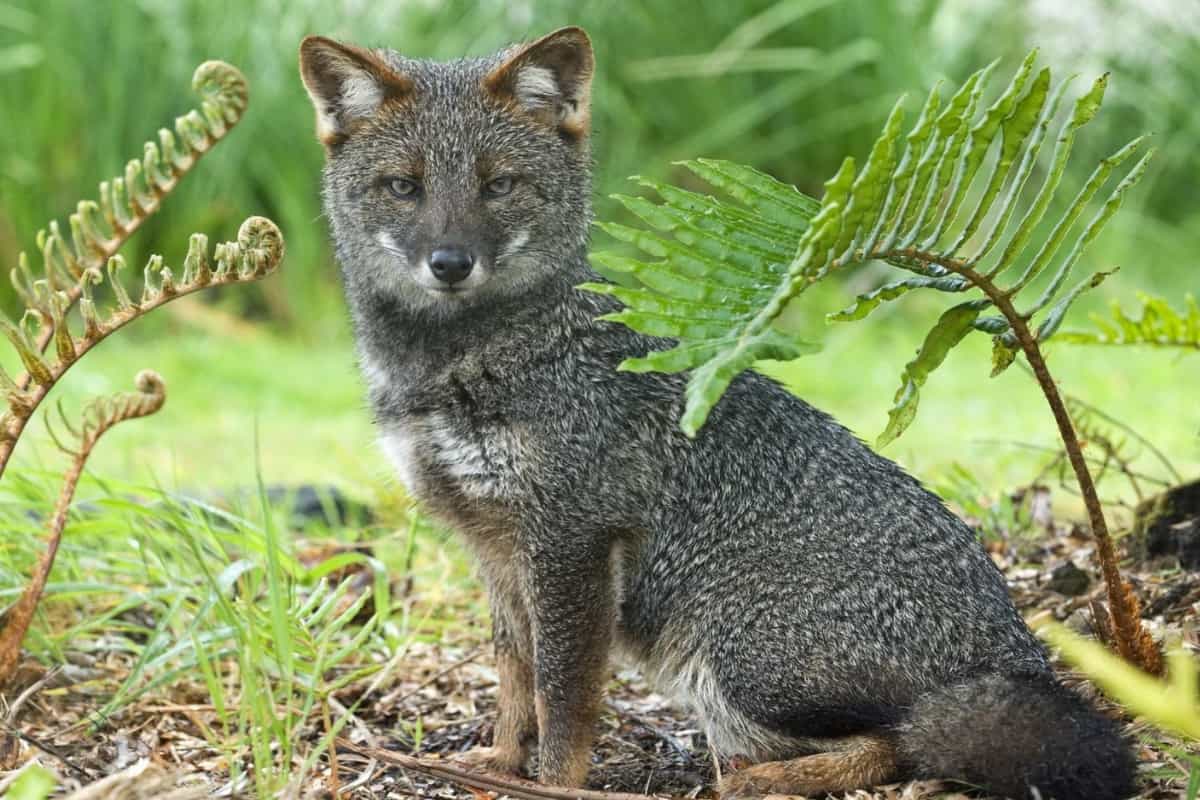
Darwin’s fox, also known as the chile fox, is a small South American fox that resembles the coyotes in appearance. It is found exclusively on Chiloé Island in Chile and is considered one of the rarest fox species in the world. Darwin’s fox is a carnivorous animal that primarily feeds on rodents, birds, and insects.
Its habitat is threatened due to deforestation and habitat fragmentation, which has led to its population decline. Conservation efforts are being made to protect Darwin’s fox and its habitat. However, it remains critically endangered and requires urgent attention for its survival.
7) The African Wild Dog
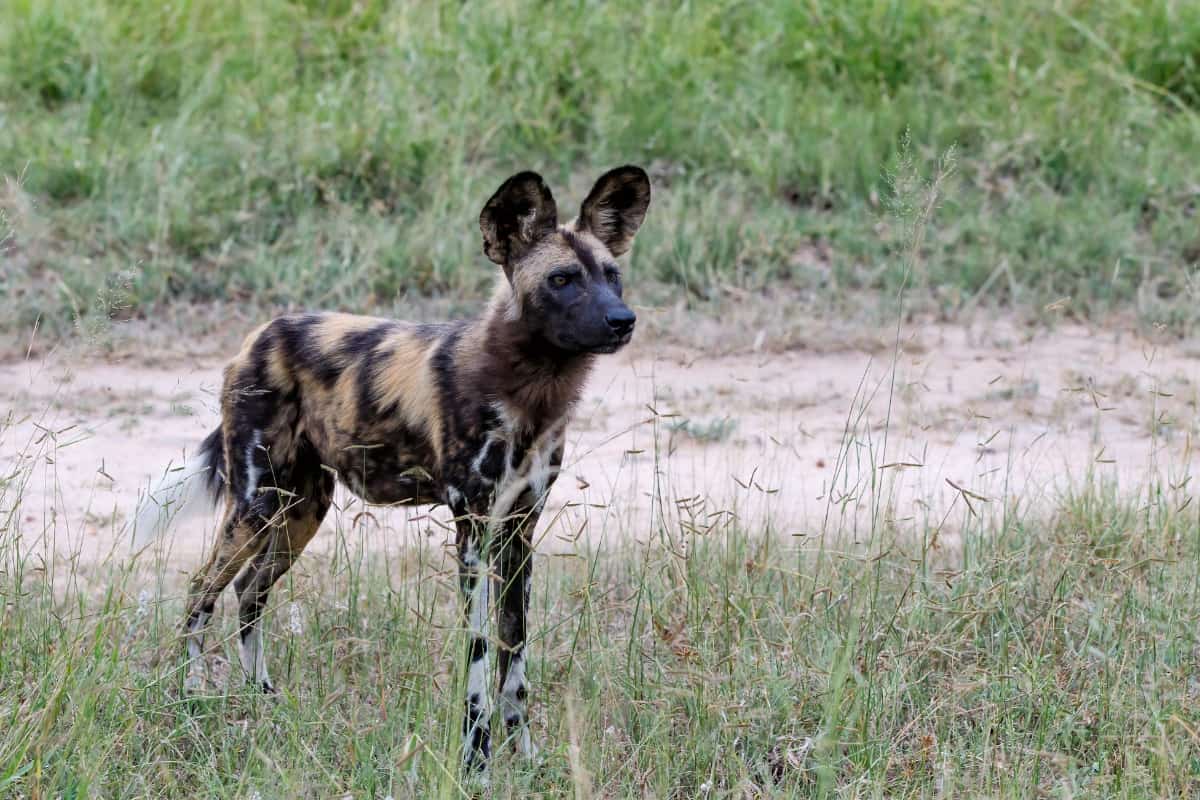
No doubt many dogs that look like coyotes. However,the African wild dog is another animal often mistaken for a coyote due to its similar appearance. They have slender, long-legged body and a bushy tail. However, the African wild dog has distinctive black, white, and tan fur patterns unique to this species. They are native to Africa and are known for their impressive hunting skills, as they work together in packs to chase and take down prey.
Unfortunately, the African wild dog is considered endangered due to habitat loss and hunting, with only an estimated 6,000 individuals remaining in the wild. Learning how to correctly identify this unique and threatened species is essential to aid in their conservation efforts.
8) The Crab-Eating Fox

As the name suggests, the Crab Eating Fox feeds on crabs and eats small mammals, birds, and fish. This species is commonly found in South America and is known as the ‘forest fox.’ They have short legs and a reddish-brown coat that makes them camouflaged in their habitat.
Like coyotes, the Crab Eating Fox is considered a generalist carnivore, meaning they eat a wide range of foods. However, they differ in appearance, habitat, and diet. The Crab Eating Fox is a fascinating animal to learn about and one of the many animals that can be mistaken for coyotes.
9) The Side-Striped Jackal

The side-striped jackal, or the Canis adustus, is native to sub-Saharan Africa. These animals are slender and have short, bushy tails. Their fur color varies from sandy yellow to gray, with black stripes on their bodies. These jackals are omnivorous, with a diet of small mammals, reptiles, insects, fruits, and berries. They live in small packs and are often found in savannahs and woodlands.
Despite their resemblance to coyotes, they have distinct physical characteristics and behaviors. Side-striped jackals communicate through a range of vocalizations and also use scent marking to define their territories.
10) The Ethiopian Wolf
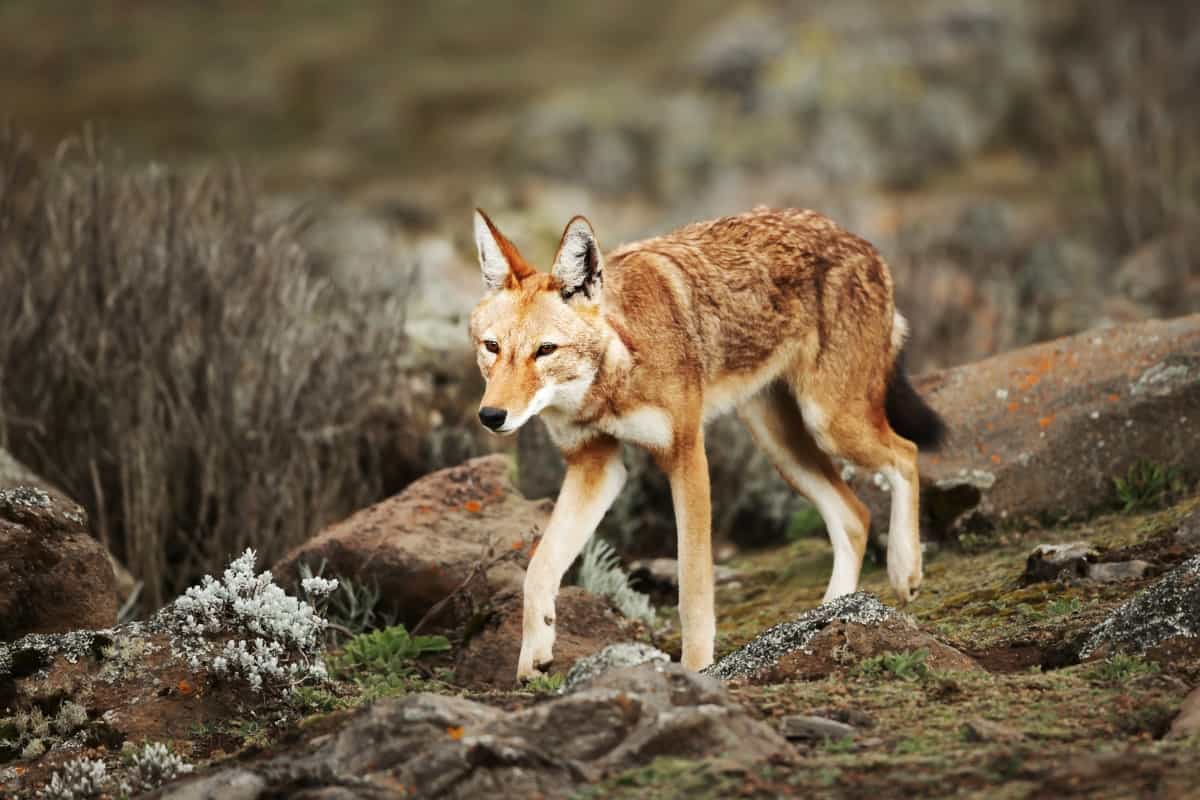
The Ethiopian wolf, also known as the Abyssinian wolf, is a highly endangered species in Ethiopia’s highlands. They are often confused with coyotes due to their reddish-brown fur and pointed ears. However, these wolves are much smaller than coyotes and have longer, more slender legs.
They primarily feed on rodents, which make up 90% of their diet. Unfortunately, their habitat is rapidly declining due to agriculture and overgrazing, putting them at a high risk of extinction. Conservation efforts are underway to protect this unique and beautiful species, and we must do our part in preserving their habitat to ensure their survival.
11) The Australian Dingo
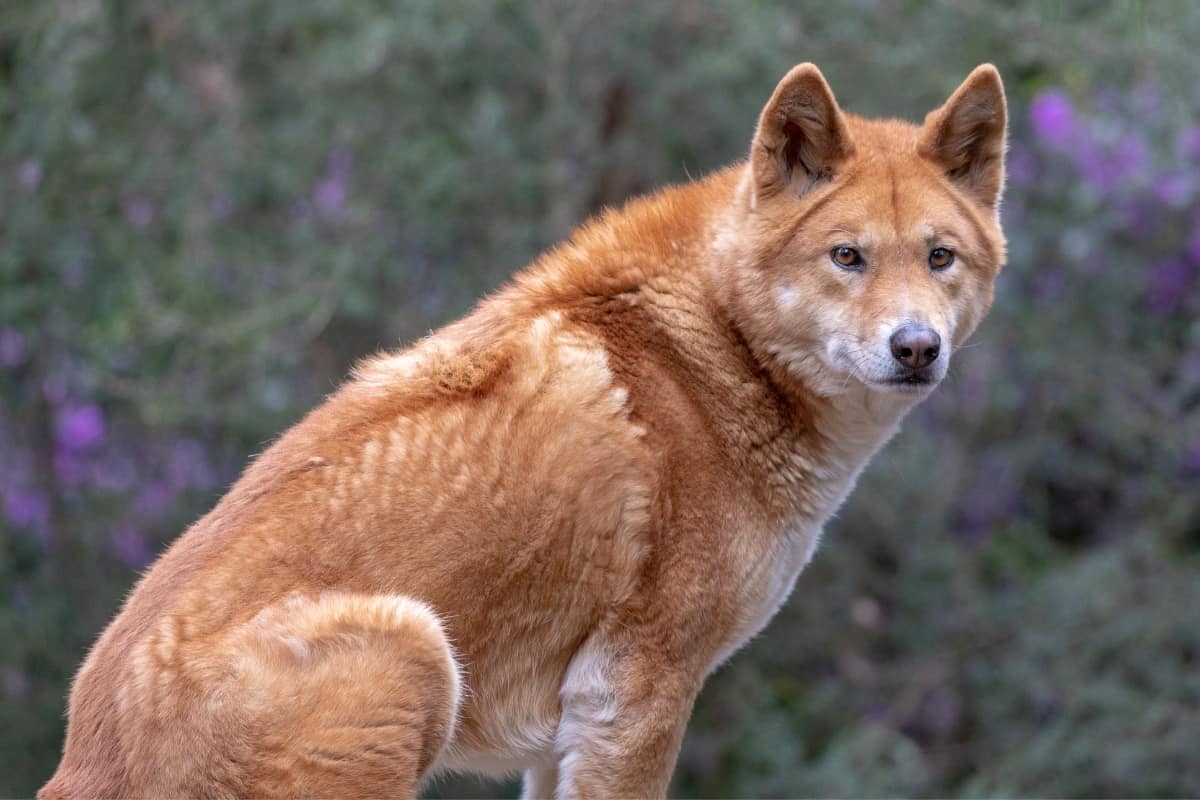
The Australian Dingo is a wild dog that looks like a coyote. It is native to Australia that bears a striking resemblance to a coyote. Some people have even mistaken them for one another! Dingoes have a yellowish-brown coat, long legs, and pointy ears, much like their North American counterparts.
They are also highly adaptable and have been known to thrive in various environments, from deserts to forests. However, unlike coyotes, dingoes are a protected species in Australia and have a particular cultural significance to Indigenous Australians. Despite their similarities to coyotes, it’s important to remember that dingoes are their unique species and should be treated with respect and conservation efforts.
12) The Raccoon Dogs
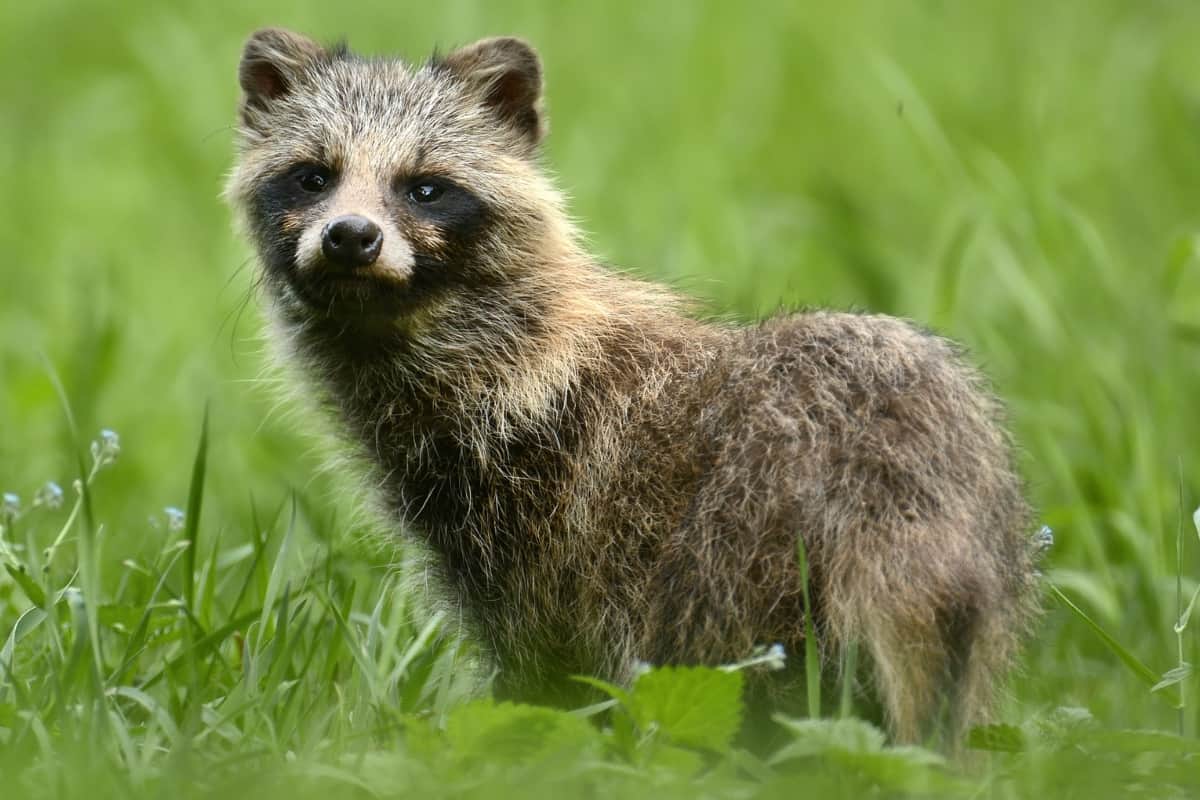
Another animal often confused with the coyote is the raccoon dog. This medium-sized mammal has a body shape and fur color similar to the coyote. However, raccoon dogs have a distinctive mask-like markings on their face and are native to East Asia, while coyotes are found in North America.
Raccoon dogs are also known for their unique vocalizations, which sound like a cross between a howl and a bark. Unfortunately, raccoon dogs have been introduced to some parts of Europe, which are considered invasive. If you spot a coyote-like animal in Europe, it could be a raccoon dog.
13) The New Guinea Singing Dog
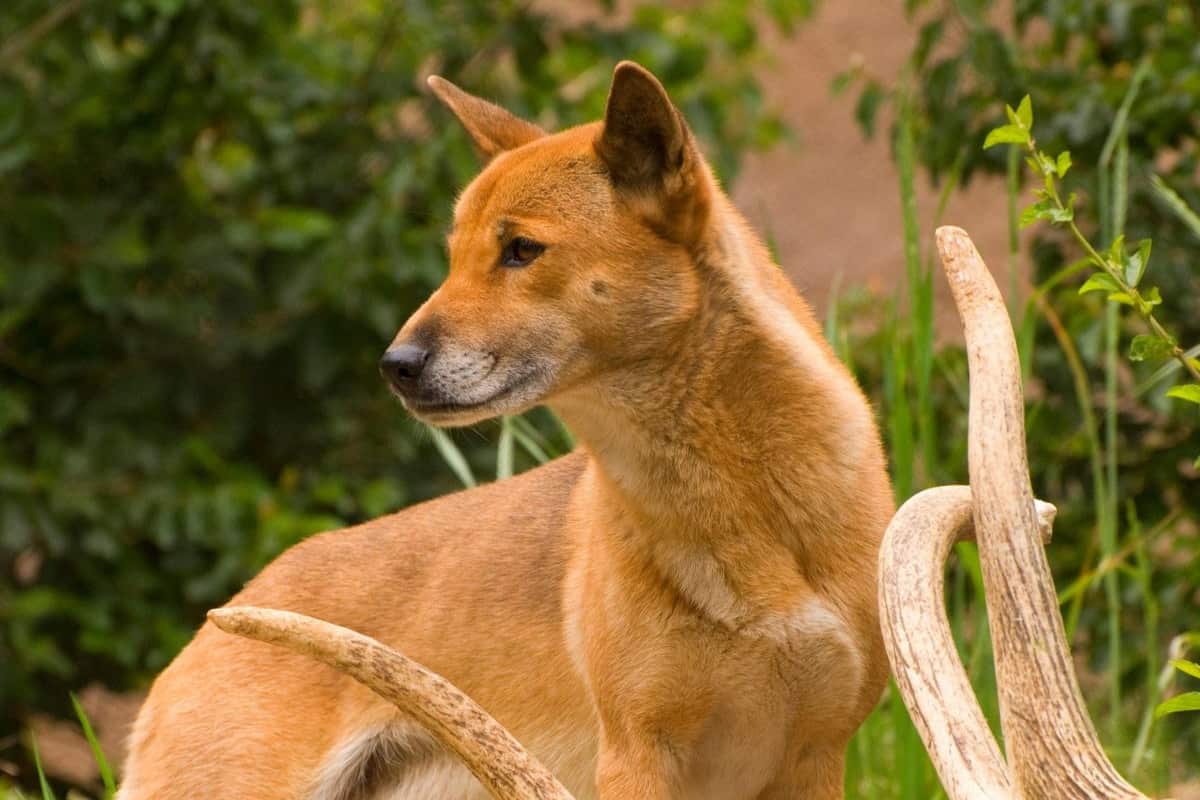
Also known as the Hallstrom dog, is a rare breed native to the highlands of New Guinea. They are small and fox-like, with a thick coat of fur that can come in shades of black, brown, and tan. These dogs are highly vocal and are known for their unique and harmonious howling, which has earned them their “singing” name. Unfortunately, the breed is considered to be critically endangered, with only a few hundred dogs left in existence. They are now being bred in captivity to preserve the breed and prevent it from becoming extinct.
14) The Fennec Fox
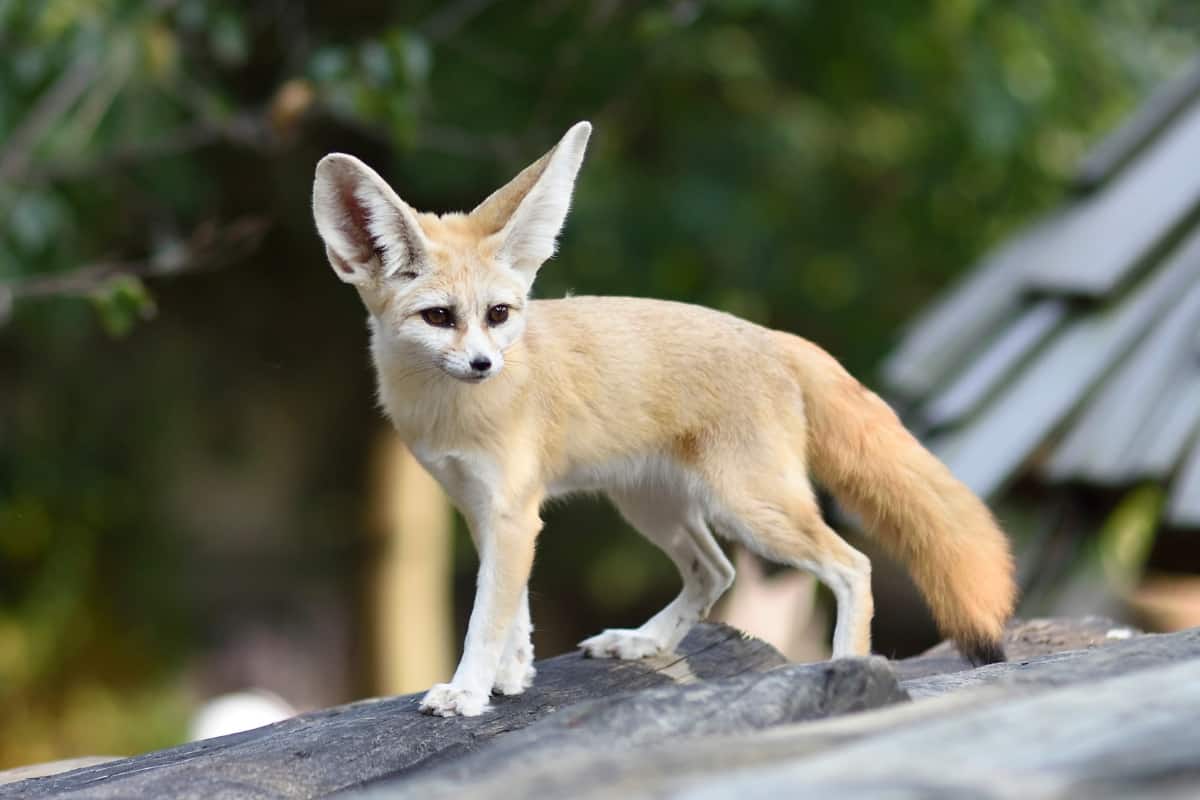
One of the most adorable creatures on this list, the Fennec Fox is a small desert fox with large ears. Native to the Sahara and the Sinai Peninsula, these little foxes are skilled at surviving in arid environments. Like coyotes, they are omnivorous, and their diet includes insects, rodents, and even fruit.
Fennec foxes are also famous as exotic pets, but owning one in some states is illegal. Their large ears help them stay cool in the hot desert, making them highly susceptible to noise pollution. Despite their cute and cuddly appearance, Fennec foxes are wild animals that belong in the wild.
15) The Arctic Fox
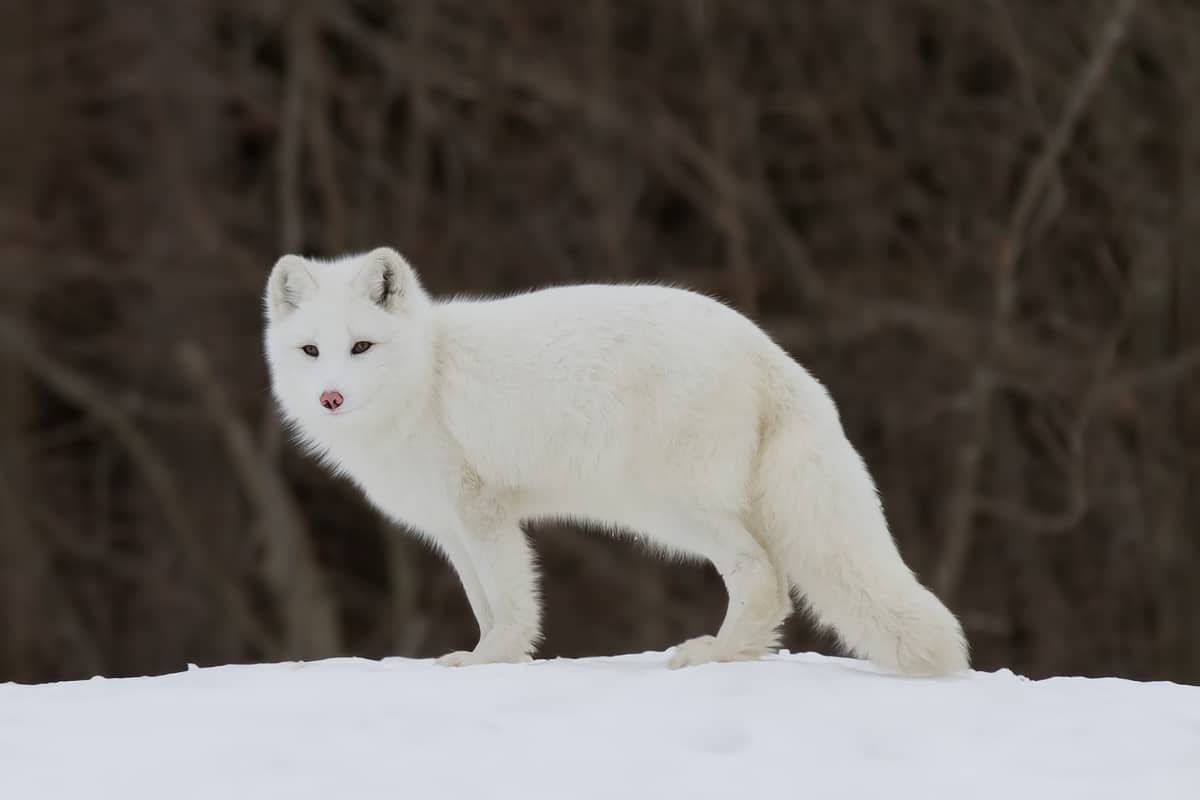
Another animal that shares similar traits with the coyote is the Arctic Fox. Both are intelligent and adaptable and have learned to survive in harsh environments. However, there are some key differences. The Arctic Fox is much smaller than the coyote, typically weighing only 6 to 12 pounds.
It is also more specialized in its habitat, living exclusively in the Arctic regions of North America, Europe, and Asia. The Arctic Fox’s thick, white fur provides insulation against the cold and makes it well-suited to its frigid environment. Despite their differences, the coyote and the Arctic Fox are impressive survivors and fascinating animals.
16) The Alaskan Malamute

It is a large breed of domestic dog originally bred for hauling heavy freight in the harsh Alaskan wilderness. These majestic dogs are often mistaken for coyotes due to their similar appearance, but their size and temperament couldn’t be more different.
With a thick, double coat and strong muscles, Alaskan Malamutes are built for endurance and are happiest when given a job to do. They are fiercely loyal and make excellent family pets for those with the space and time to devote to their needs. So, while they may look like coyotes, these gentle giants are anything but wild.
17) The Siberian Husky
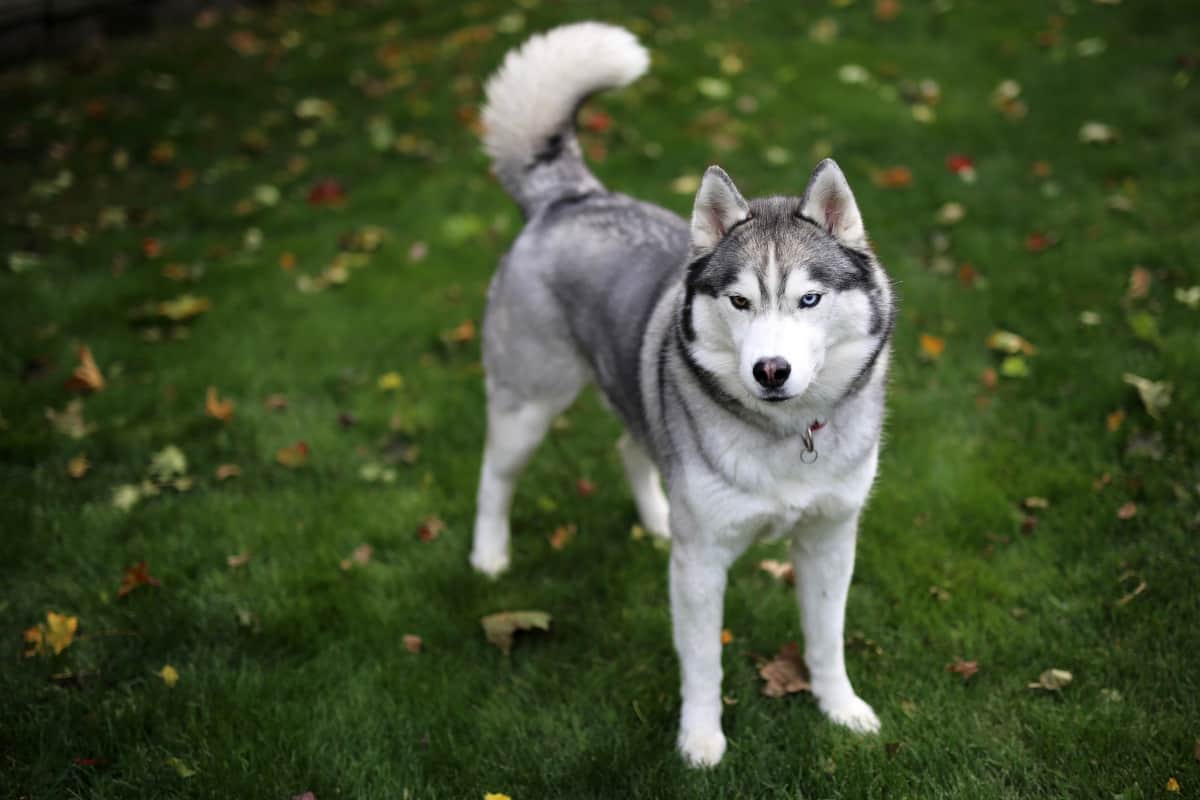
This is a breed of dog that originated in Siberia. With its thick, plush fur, striking blue eyes, and high energy, it’s no wonder that this breed often gets confused with the coyote. However, despite their similar appearances, there are distinct differences between the two animals.
Siberian Huskies are loyal, intelligent, and highly trainable, making them popular as sled dogs and family pets. They are also highly adaptable to different environments and thrive in cold climates. So if you’re looking for a loyal and energetic companion similar to a coyote, consider adding a Siberian Husky to your family.
18) The Culpeo
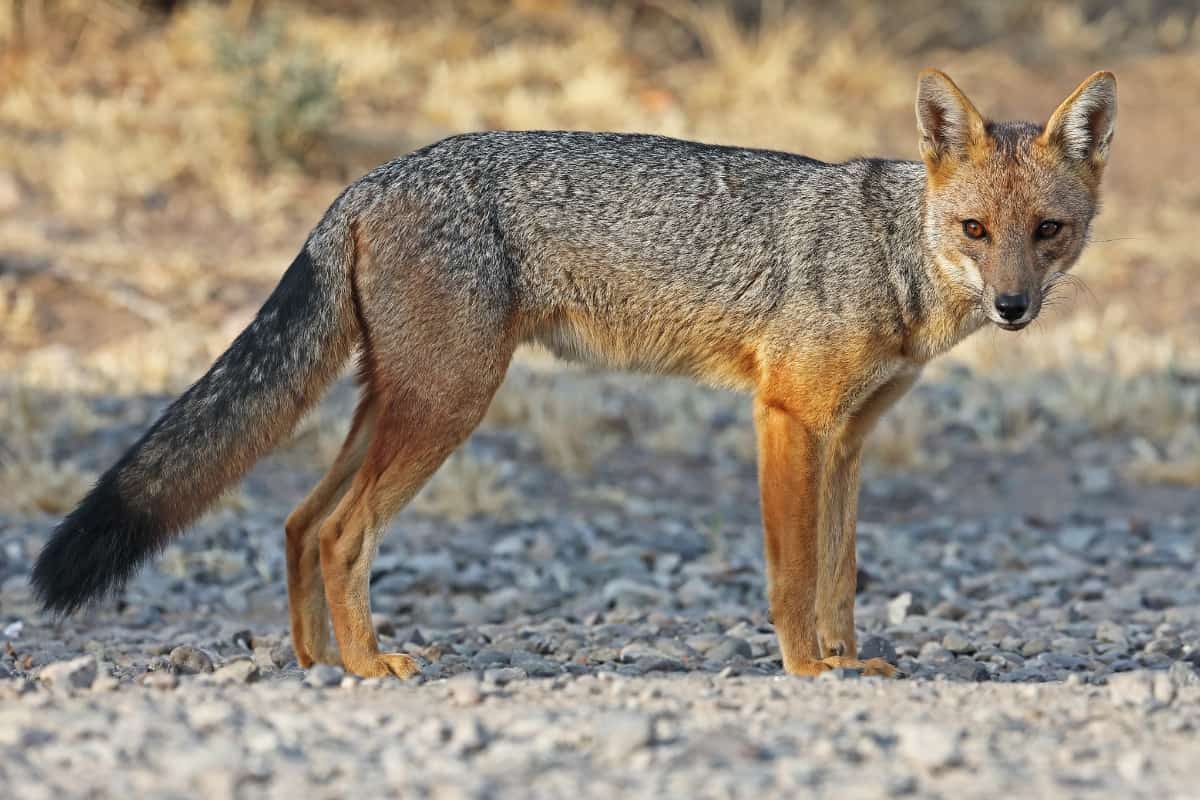
The Culpeo, or the Andean Fox, is another animal easily mistaken for a coyote. This South American native has a reddish-brown coat with a white chest and a bushy tail that resembles a coyote’s. However, the Culpeo is slightly larger than a coyote, weighing up to 30 pounds. They can be found in the Andes Mountains and adapt well to the cold climate.
The Culpeo is primarily a carnivore, feeding on rodents, rabbits, and small mammals. They are also known to eat fruits and insects, making them opportunistic hunters. Despite their similar appearance to coyotes, Culpeos are not known to pose a threat to humans.
19) The Alaskan Husky
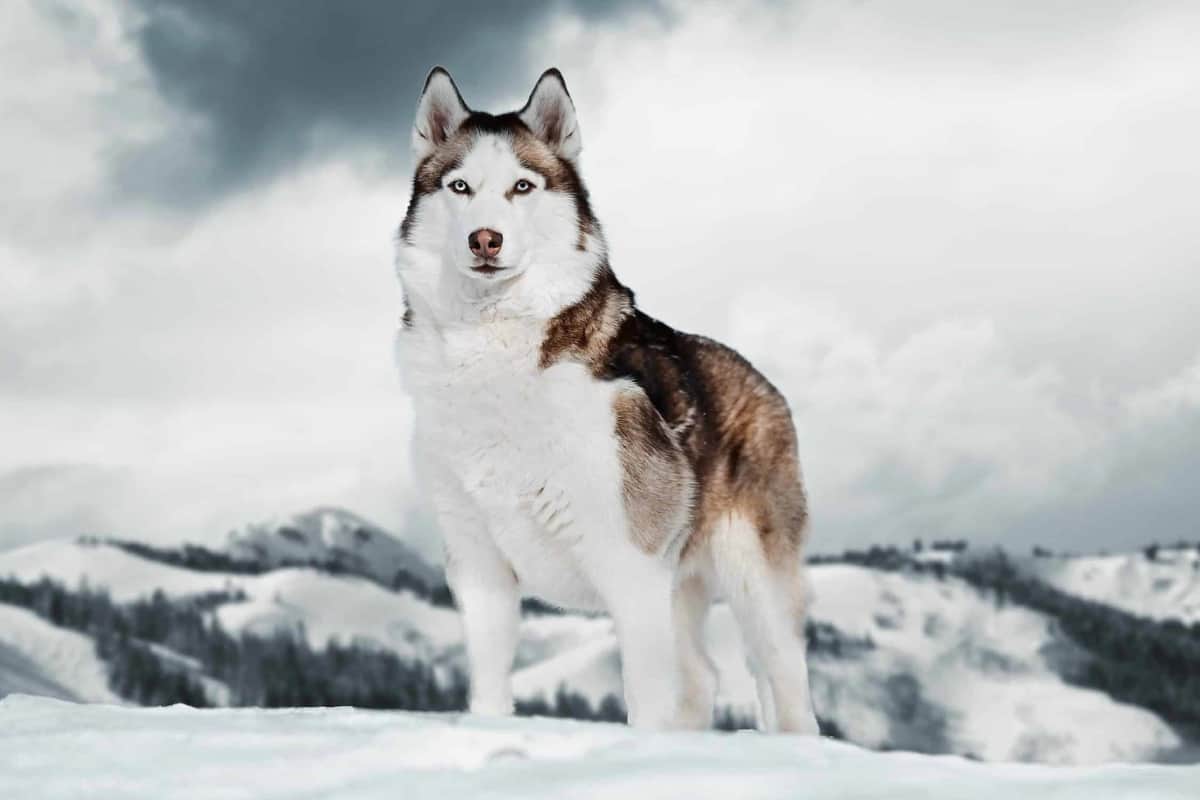
The Alaskan Husky is another breed commonly mistaken for coyotes due to their similar appearance. However, they are a domesticated breed bred specifically for their ability to pull sleds. These dogs are highly energetic, loyal, and hardworking. They are bred by crossing various dog breeds, such as Siberian Huskies and Greyhounds, to create a breed that can withstand the harsh winter conditions of Alaska and Canada.
Alaskan Huskies have a thick, double coat that protects them from the cold and a muscular body that enables them to pull heavy loads. They are affectionate dogs that make excellent pets but require lots of exercise and training.
20) The Pampas Fox
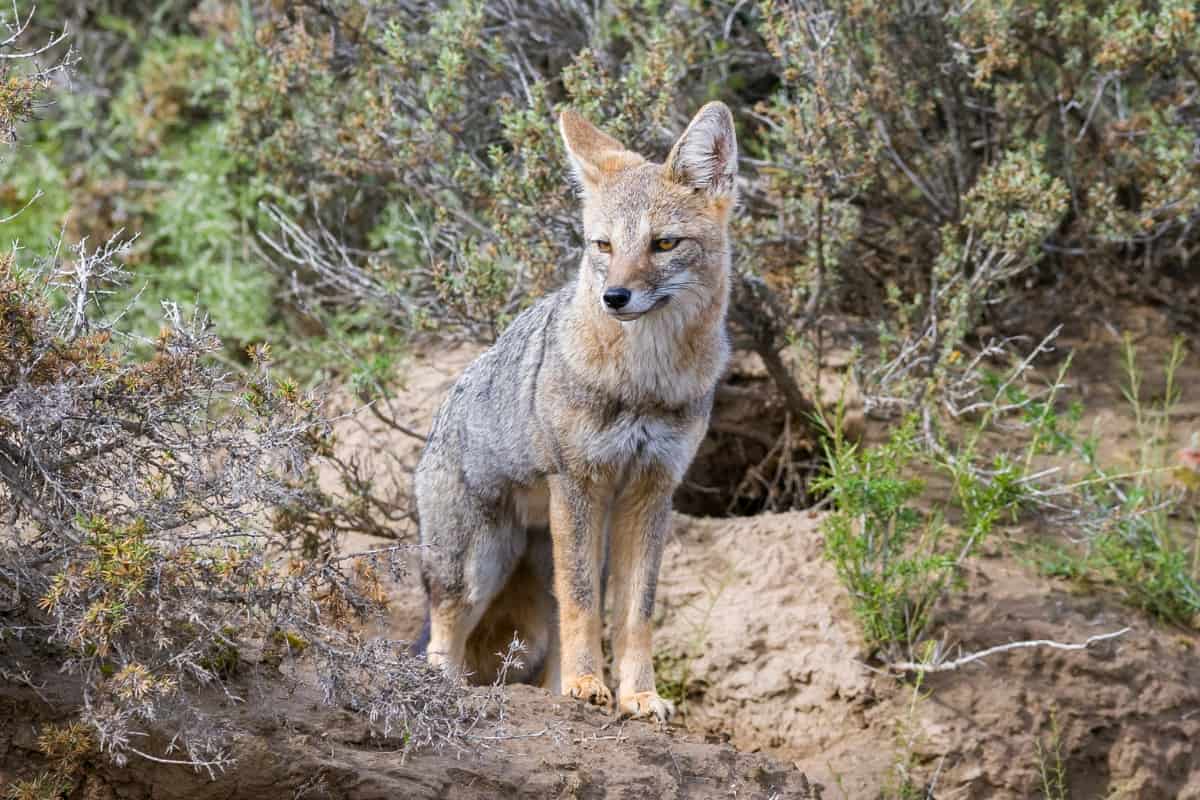
The Pampas Fox, also known as the Argentine Fox, is a small canid that resembles a domestic dog. Found primarily in Argentina, Uruguay, and Brazil, this fox prefers open grasslands and savannas. Its fur is a mix of red and grey with white underparts, distinct black legs, and a black-tipped tail.
The Pampas Fox is a solitary hunter who feeds on various small mammals, birds, and insects. Despite being listed as “least concern” on the IUCN Red List, the Pampas Fox is often hunted for its fur, causing concern for its long-term survival.
Final Verdict
While it’s easy to mistake other animals for coyotes, a closer look at their physical and behavioral characteristics can help differentiate them. From the Coywolf, a hybrid between coyotes and wolves, to the crab-eating fox found in South America, many animals are similar to coyotes.
However, with some knowledge and observation, telling them apart can become a breeze. Remember that coyotes are typically found in North and Central America and have distinctive features like a bushy tail and a pointed snout. Always exercise caution and avoid feeding or approaching any wild animal, whether a coyote or another species.
FAQs

Ray is an experienced wildlife researcher with a background in veterinary medicine. His contributions have significantly advanced our understanding of various wild animals.

